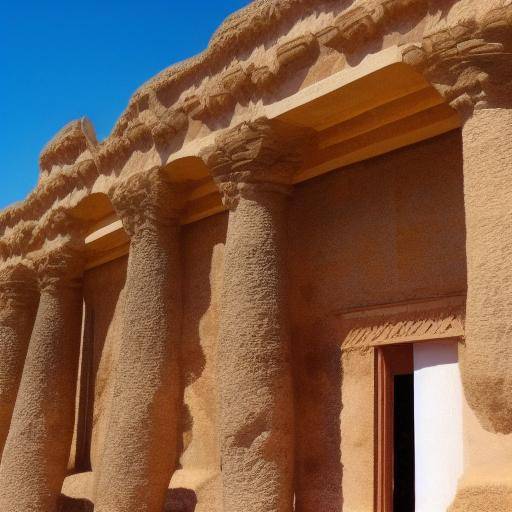
The Todra Gorges are an extraordinary example of the natural beauty and cultural wealth that characterize Morocco. Located in the southeast of the country, these impressive gorges offer a unique combination of local history, geology and traditions that are worthy to explore.
Introduction
The Todra Gorges, also known as Todra Gorge, are a river cliff formed by the Todra River. Located in the High Atlas region, these gorges offer not only an impressive view of limestone cliffs rising up to 300 meters high, but also a deep connection with the rich Moroccan culture and a window to geology education.
In this article, we will explore the history, geology and local traditions that make the Todra Gorges a fascinating destination. From its geological origins to its cultural importance in the context of Morocco, we will take a look at this magnificent place that attracts visitors from around the world.
History and Background
Geological origins
The Todra Gorges originate in the geological activity that has occurred over millions of years. The erosion caused by the Todra River has broken these deep throats, creating a spectacular landscape that reveals rock layers with millions of years of history.
The study of the geology of the Todra Gorges offers a unique opportunity to understand the natural processes that have shaped this impressive slider. Geological research has revealed the wealth of fossils and minerals present in the region, which provides an invaluable insight into the geological evolution of Morocco.
Cultural Importance
In addition to its fascinating geological formation, the Todra Gorges also have significant cultural importance. The local population, especially the Berber tribe, has maintained traditions and customs rooted in these lands for centuries.
Traditional architecture and local crafts reflect the history and identity of the region, which makes the Todra Gorges not only an impressive natural destination, but also a living testimony of Moroccan culture. Music, dance and traditional celebrations are key elements that enrich the experience of visiting these throats.
Detailed Analysis
Benefits and Challenges
The Todra Gorges offer a wide range of benefits for the region, from sustainable tourism to the conservation of natural and cultural heritage. However, they also face challenges, such as the preservation of their fragile environment against the growing number of visitors.
Current trends
The growing awareness of the importance of preserving natural and cultural areas has promoted initiatives to promote responsible tourism in the Todra Gorges. Sustainable development and the participation of local communities are central to current trends.
Perspectives and Views
Several actors, including local authorities, conservation experts and indigenous people, share diverse views on how to manage the balance between conservation and development in the Todra Gorges. Collaboration and dialogue are key to finding solutions that benefit all the parties involved.
Comprehensive review
Applications and Best Practices
The lessons learned from the Todra Gorges offer valuable insights on how to manage tourism in sensitive areas, promote respect for local traditions and preserve natural beauty.
Opinions of Experts and Future Perspectives
Specialists in sustainable tourism, heritage conservation and geology share their knowledge of the potential and challenges of initiatives in the Todra Gorges.
Comparative analysis
We will compare the management of the Todra Gorges with other natural and cultural destinations in Morocco and the world, highlighting similarities, differences and opportunities to improve conservation and sustainable tourism.
Conclusion and Frequently Asked Questions
Conclusion
The Todra Gorges are a natural and cultural treasure that combines the majesty of geology with the richness of Berber traditions. Its importance transcends visual beauty, offering valuable lessons on the interaction between humanity and its environment. The conservation of this site and the promotion of responsible tourism are essential to ensure that future generations can enjoy and learn from this unique place.
Frequently asked questions
What is the best time to visit the Todra Gorges?
The best time to visit the Todra Gorges is during the spring (March to May) and autumn (September to November), when the weather is more temperate and pleasant for outdoor activities.
What activities can be done in the Todra Gorges?
Popular activities in the Todra Gorges include hiking, rock climbing, photography, and exploring Berber villages and their local markets.
How to get to the Todra Gorges?
The Todra Gorges are located near the city of Tinghir. You can get by car from Marrakech or Fez, or take a bus to Tinghir and then a local taxi to the throats.
Is it safe to visit the Todra Gorges?
Yes, the Todra Gorges are generally safe for tourists. However, it is always advisable to take regular precautions, such as staying on marked trails and traveling with a local guide if possible.
What should I take for a visit to the Todra Gorges?
It is recommended to wear comfortable walking clothes, hiking shoes, sun protection (sombrero, sunglasses, sunscreen), and enough water to stay hydrated during outdoor activities.
